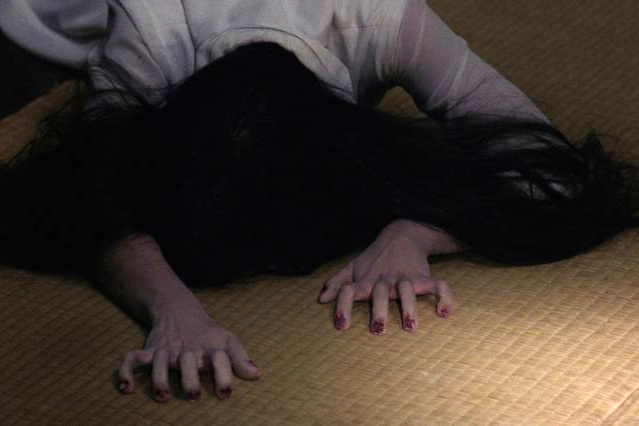The Alamo Drafthouse hosted a screening of the original Japanese horror film “Ringu,” directed by Hideo Nakata, last Friday, Jan. 24.
To this day,“Ringu,” meaning “Ring,” is considered the most successful horror film in Japan due to its huge box office success.
With a 97% rating by Rotten Tomatoes, the plot follows the mystery of a cursed videotape that warns the viewer they will die in exactly a week.
The film is based on the 1991 trilogy written by Japanese author, Koji Suzuki, titled, “Ring, Spiral and Loop.” A short story collection was released after the trilogy, which introduces new content that interconnects with it.
The novels have also been adapted as a manga series by Hiroshi Takahashi. Suzuki was intrigued by Nakata’s work after his release of the 1996 horror film “Ghost Actress.” The author himself approached Nakata asking him to direct a motion picture adaptation of his written work.
In the film adaptation, both Takahashi and Nakata collaborated closely for the script. Produced by Kadokawa Shoten, the film stars Nanako Matsushima as Reiko Asakawa, a journalist who begins investigating the unexplained death of her niece, Tomoko.
Following the rumors of a mysterious videotape and blurry photographs from her niece’s camping trip, the search leads Asakawa to the cabin where her niece stayed, discovering a mysterious unlabeled videotape. Asakawa watches the video out of pure curiosity only to see disturbing images, where she then receives an eerie phone call telling her that she only has seven more days to live. Asakawa storms out of the cabin with the tape in shock.
After Asakawa made a copy, she seeks the help of her ex-husband Ryuji Takayama, where the pair then begin to unveil hidden messages from the tape that prompts them to investigate the tape’s origin.
Asakawa discovers the history of a psychic named Shizuko Yamamura, who had a daughter named Sadako known to also obtain psychic abilities. Takashi, Yamamura’s brother, exposes Yamamura to the media, attracting a doctor named Heihachiro Ikuma, who did research on extrasensory perception and even had an affair with him.
During this publicity frenzy, a journalist calls Yamamura a fraud by publishing slanderous reports but Sadako psychokinetically causes the journalist to commit suicide.
A doctor notices the immense power of Sadako through a vision, so he takes matters into his own hands by murdering her and throwing her body down into a well.
Sadako then creates the videotape as a vengeful curse, passing on the curse to any person that views it, much like a “chain letter” that is meant to convince the recipient to pass it on, if not, the recipient will die.
Following the film’s success in Japan, director Gore Verbinski released an American version dubbed “The Ring” in 2002 starring Naomi Watts. The film grossed $249 million worldwide, making it one of the highest-grossing horror remakes. The remake received various reviews from film critics, like The New York Times which said it is “devoid of feeling,” and The Guardian’s Peter Bradshaw who called it “disappointing, losing most of its original flavour,” as Hollywood remakes have been known for.
“‘Ring’ has indescribably disturbing moments that frightened me out of my wits. But like many of the Japanese horrors that followed, it sometimes has an elliptic and confusing storytelling style that can make plot-progression muddy,” Bradshaw said.
However, with a Rotten Tomatoes rating of 71%, some viewers disagree with the remake’s harsh criticism. The Guardian’s Michael Hann believes the remake outshines the original, writing, “The difference, I think, is that Ringu is a shocking film, while The Ring is a horror film,”
The Ring made slight changes from the original version by lengthening the plot. The Ring is notably recognized for its cinematography and the overall unsettling atmosphere that can give the viewer a dreading sensation of uneasiness with its disturbing images. However, critics also describe the film having poor character development and other critics, like USA Today’s Claudia Piug, found themselves confused at the end of the movie with the plot not making any sense.
In 2005, Nakata directed the American version of the sequel “Ring Two,” with a total gross of $161 million. The third installment of the series, “Rings,” was released in 2017 and was directed by F. Javier Gutierrez, based on Suzukis’second novel, “Spiral.”
The vengeful spirit of Samara, the English name for Sadako, is depicted as a girl in the white dress and face hidden by long, black hair crawling out of the well and television. This image soon became a horror icon that has managed to continue to send chills down the spine of horror fans worldwide, generation after generation.
Jaqueline Martinez may be reached at [email protected].










